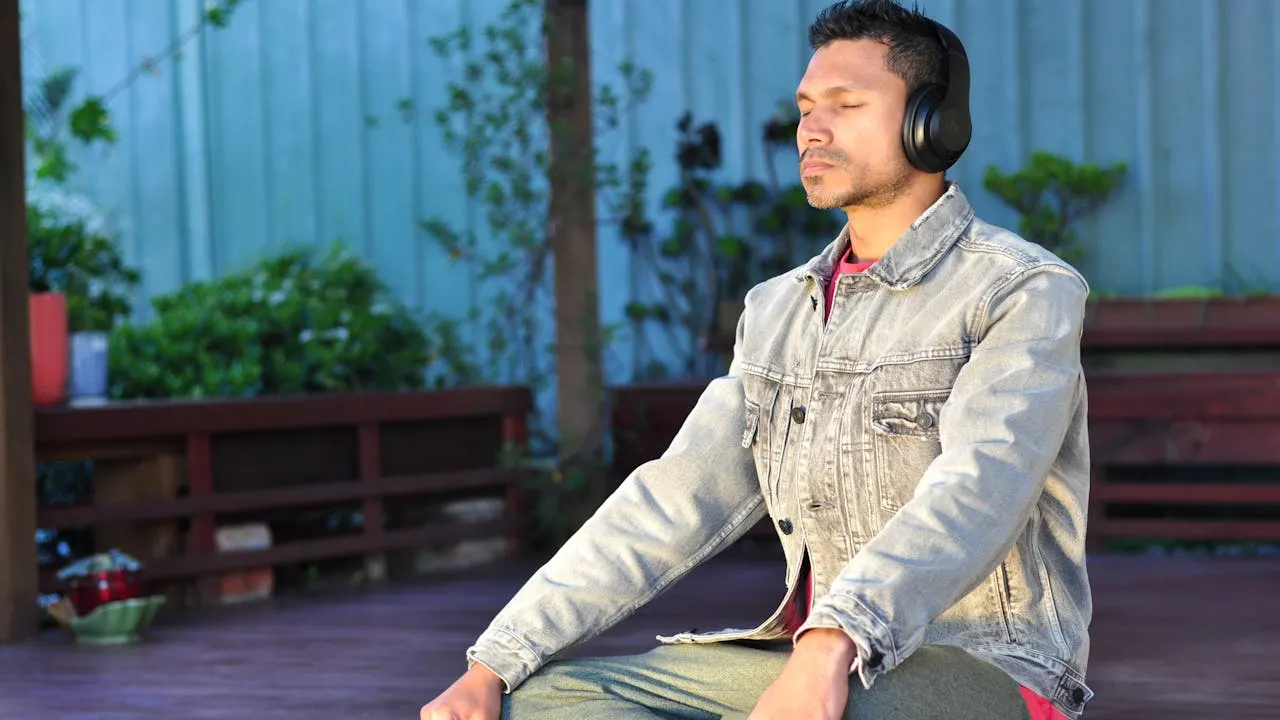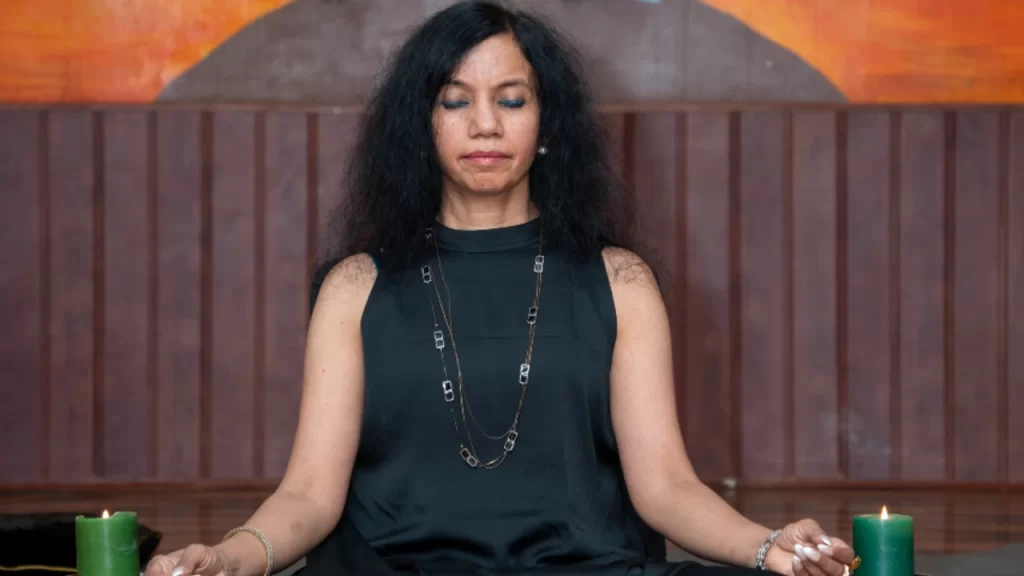Meditation is a powerful tool for self-awareness, stress relief, and inner peace. However, one often overlooked aspect of meditation is the direction in which you face while meditating. Many ancient traditions and modern practitioners emphasize that choosing the right direction can enhance the effectiveness of meditation. So, which direction is best for meditation? Let’s explore this concept in depth.
The Importance of Direction in Meditation
The direction you face during meditation can influence the flow of energy, concentration, and overall experience. Different cultures and spiritual traditions have their own beliefs regarding which direction is best for meditation. Understanding these perspectives can help you choose the direction that aligns with your goals.
Which Direction Is Best for Meditation According to Different Traditions?
1. Eastern Traditions: Facing East
Many Eastern traditions, including Hinduism and Buddhism, recommend facing east during meditation. This is because the sun rises in the east, symbolizing new beginnings and enlightenment. Facing east is believed to:
- Enhance spiritual growth
- Increase focus and clarity
- Align with cosmic energy
For those practicing alchemy energy healing, facing east can amplify the flow of positive energy, helping balance the chakras and promoting deep healing.
2. Vastu and Feng Shui: The Influence of North
Vastu Shastra and Feng Shui suggest that facing north can also be beneficial for meditation. The Earth’s magnetic field flows from north to south, and meditating while facing north aligns your body with this natural energy. This direction is associated with:
- Mental clarity
- Deep concentration
- Higher levels of consciousness
If you are receiving guidance from a life coach India, they may recommend experimenting with north-facing meditation to enhance your mindfulness practice.
3. Native American and Indigenous Practices: Connecting with the West
Some Indigenous cultures believe that facing west during meditation allows individuals to connect with their ancestors and inner wisdom. The West represents introspection and letting go, making it ideal for:
- Self-reflection
- Emotional healing
- Preparing for transformation
For those interested in life counseling, meditating while facing the West may help facilitate emotional breakthroughs and personal growth.
4. Tibetan and Yogic Traditions: South for Inner Strength
Though less commonly recommended, some yogic traditions suggest facing south for grounding and inner strength. The South is associated with stability, resilience, and determination. This direction is suitable for:
- Grounding energy
- Overcoming fears and anxieties
- Strengthening willpower
Individuals practicing healing stone therapy may find that certain crystals work better when meditating while facing south, as this direction is linked to the element of earth.
Scientific Perspective on Meditation Directions
Scientific research suggests that which direction is best for meditation could be influenced by Earth’s magnetic field. Some studies indicate that aligning meditation practice with the Earth’s geomagnetic forces can enhance focus and relaxation. The body’s electromagnetic field interacts with the Earth’s field, and certain directions, particularly facing north or east, are believed to support a balanced state of mind. Research on brainwave activity also shows that directionality can impact neural oscillations, affecting concentration and mindfulness. However, more empirical studies are needed to establish a definitive connection between meditation direction and physiological or cognitive benefits.
Astrological Influence on Meditation Direction
Astrology suggests which direction is best for meditation, the planet depends on alignment and zodiac signs. East traditions, especially Vedic astrology, recommend the former to utilize the sun’s energy for clarity and renewal. The answer is associated with the disciplined energy from Saturn, which supports deep introspection. Meanwhile, some astrologers are taking precautions to meet the south, as it is linked to Mars and Rahu, which may interfere with mental peace. The lunar and solar phase also plays a role, with full moon focus. Personal astrological charts can further limit the ideal meditation direction for a person’s spiritual development.
How Different Religions View Meditation Directions
There are different views in religious traditions on which direction is best for meditation. In Buddhism, the East is preferred to meet because it is a symbol of enlightenment, the direction has been reflected in the direction of meditation. Hinduism is also in favor of the East, and associates it with divine blessings, while the answer is considered ideal for spiritual development. Christianity does not emphasize a special direction, but some traditions face east because of their relationship to revival and divine light. In Islam, beans such as meditation (dhikar) are often in line with cubes (corn) in the form of a sacred direction. Each tradition provides unique insight, but the most emphasizes the intention of the direction.
Which Direction to Avoid While Meditating?
To understand which direction is best for meditation, it is also to understand to know who to avoid. Many traditions discourage the South, combining it with negative energy, death and spiritual decline. According to Hindu and Vedic beliefs, compliance with Southern -yama, the gods of death creates potential restlessness. Some feng shui theory also suggests meditation to avoid meditation due to disruptive energy flies. The vest is sometimes considered less effective as it symbolizes the end instead of the beginning. However, individual comfort and intentions often strike directional concerns, which makes it necessary to test different buoys for the most cool experience.
Best Meditation Postures for Different Directions
Asana plays an important role in deciding which direction is best for meditation. While facing the former, the mental clarity that sits in a cross-bone position increases (padmasana). On the north side, a knee-like mudra, such as Vajrasana, focuses on stability and focus. Although less common, it may be less common to take advantage of a recurrent position (March) to promote exemption. Standing meditation is effective for Western parties who want grounding and mindfulness. The ideal asana depends on both direction and meditation, which ensures physical comfort and spiritual alignment.
Personalized Meditation: Choosing the Right Direction for You
To determine which direction is best for meditation, finally a personal journey. Factors such as cultural beliefs, scientific studies and personal experiences play a role in finding the most effective orientation. Those seeking mental clarity may benefit from meeting the previous ones, while deep introspection corresponds to the answer. Energy balance practice can work best with the West, while the rest technique can detect the South despite traditional concerns. Using different directions and observing mental and physical reactions can help individuals discover their most harmonious meditation practice.
Which Direction Is Best for Meditation Based on Personal Goals?
Apart from traditional beliefs, choosing which direction is best for meditation can depend on your personal objectives:
- For clarity and wisdom: Face east to align with new opportunities and enlightenment.
- For focus and concentration: Face north to tap into mental clarity and spiritual alignment.
- For emotional healing: Face West to release past traumas and embrace transformation.
- For grounding and strength: Face south to develop resilience and inner power.
If you’re involved in family constellation therapy, you may benefit from experimenting with different meditation directions to observe which one enhances your ability to connect with ancestral energy.
How to Optimize Your Meditation Space?
To make the most out of which direction is best for meditation the best instructions, to customize your meditation site with these tips:
- Choose a cool place: Ensure minimal distraction for deep focus.
- Use natural elements: Include plants, crystals, or cool colors to increase the energy cut.
- Sit down comfortably: Whether it is the cross people or on a chair, you need to maintain a comfortable attitude.
- Practice regularly: Stability is important to experience the full benefits of meditation.
Final Thoughts: Which Direction Is Best for Meditation?
Ultimately, which direction is best for meditation, it depends on your personal priorities, goals and trust system. Using different directions can help you find out which one resonates most with your practice. Whether you seek spiritual knowledge, emotional treatment, or mental clarity, the right direction can increase the experience of your attention.
By integrating knowledge from different traditions, you can create a meditation practice that matches your unique energy and ambitions. Therefore, try different directions, inspect them and find that you best support your journey towards inner peace and self-pad.
FAQ’s
Which direction should you face when meditating?
which direction is best for meditation depends on spiritual, scientific and personal factors. Many traditions recommend meeting east, as it matches the rising sun, which symbolizes a new beginning and mental clarity. The answer is also preferred for deep introspection and spiritual development due to the association of the earth’s magnetic field. Some practices discourage south and connect it with restlessness and negative energy. The vest is neutral but can be useful for reflection. Finally, experimenting with different directions and observing their effects on focus and relaxation can help determine the best orientation for a person’s attention to practice.
Which face is good for meditation?
The ideal orientation varies from meditation, but many traditions suggest which direction is best for meditation depends on energy and spiritual benefits. The former is highly recommended when it matches the rising sun and promotes clarity and knowledge. The answer is also beneficial, as it is connected to the Earth’s magnetic field, and supports deep concentration and spiritual awakening. The South is usually not noted because of negative energy associations, while the West may be suitable for introspection and leave. Finally, personal experience and comfort play an important role in determining the most effective direction for meditation practice.
What is the best position for meditation?
The best position for meditation depends on comfort and alignment in which direction is best for meditation. Sitting in a cross-legged position (padmasana), towards the former, improves focus and mental clarity. Supports deep introspection and stability to the north side of the knee -currency (Vajrasana). Relaxation in Daarisana can be effective for relaxation, especially if it meditates to the west. Standing meditation while facing some direction works well for grounding. While tradition and science suggest the east or response to optimal energy life, personal preference means the most. Choosing a condition that ensures relaxation and mindfulness, regardless of direction will increase the gain.
What’s the correct way to meditate?
The right way to meditate is to find a quiet place and use a comfortable attitude and which direction is best for meditation on the basis of personal or spiritual faith, it is involved. Sitting in a cross-legged position while facing the east increases focus and mental clarity, while facing the answer promotes deep introspection. Close your eyes, focus on your breath and let ideas float without attachment. Maintain a straight spine to encourage energy great. Practicing mindfulness, singing mantras or guided meditation can increase the experience. Consistency is important- common meditation, regardless of direction, helps to achieve inner peace and mental balance over time.







Leave a Reply